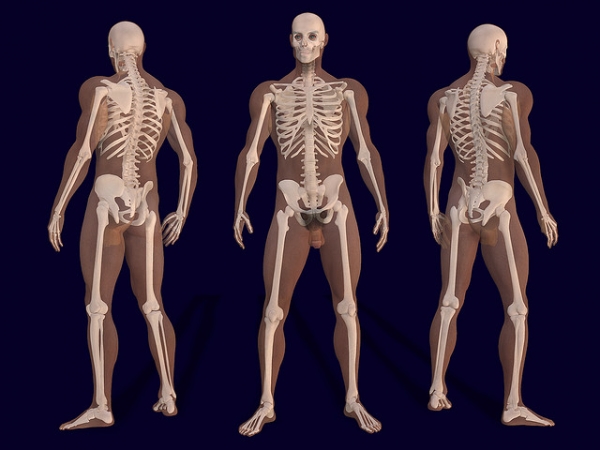A recent study published Dec. 22 in the journal PNAS, goes into why our agriculturally savvy ancestral kin are partially responsible for our now well-adopted sedentary lifestyles-and our weak bones to boot.

In our earlier days of human evolution, we were a society of active hunter’s, foraging off always changing landscapes. Ancestral man would, often times, find himself running down quadrupedal game for miles till the game collapsed from sheer exhaustion-or slowed down immensely. And, at that time, man would finish off the soon-to-be meal, and later with the help of his nomadic community. take the bloody trophy away to be slaughtered and consumed. Early man was a fit, active creature. But then man decided to forego the tedious practices of hunting and gathering, instead setting-up more permanent residences where man would domesticate, cultivate, and produce―and become a bit more lethargic.
Trabecular bone has much greater plasticity than other bone, changing shape and direction depending on the loads imposed on it, says Dr. Colin Shaw from the University of Cambridge, an avid researcher in bone-densities and structure components.
Trabecular bone structure is the inner-woven osteoderm-lattice that’s responsible for weight-bearing. And it is by studying various trabecular bone samples from both nomadic and settled human populations that paleontologists today were able to determine the lesser state of sedentary bone structure; hunter-and-gathering populations had less air in-between the spongy inner mass than did the same sample from an agricultural-practicing human.
Where is this difference is most exacerbated in our skeletal system? The answer lies in all the places that our westernized society is now finding to be chronic areas of health issues: ankles, hips, wrists, knees, and in foot bone tissue.
However, this doesn’t mean that the modern day, desk-hugging human body can’t counteract its inherently low-bone density. One of the most readily accepted practices for strengthening bones is quite simple: to get up. Cardio, yoga, pilates, weightlifting, etc.(even in a light amounts) has a major impact on bone health. The human body is constantly adapting to new stimuli and so, by putting more emphasis on the weight-bearing trabecular bone tissue, bodies will build-up the needed tissue mass to accommodate for those newly adopted practices.
Without resistance exercises to strengthen muscles and bones, most people face a midlife slide into flabbiness and its associated ills, say Carol Krucoff and Mitchell Krucoff, medical doctors consulted on the study . And as we age, strength training becomes even more important to offset age-related declines in muscle and bone mass that can lead to frailty and fracture- the primary reason older adults wind up in nursing homes.





